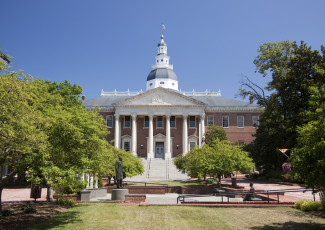Q&A: The Importance of Year-Round Funding
By Sonya Stinson
April 28, 2015
Scott Ralls, North Carolina Community College System president, discusses why scaling the funding model will make a difference.
Playing up the cost-efficiency and the potential boon to area economic development can help community colleges win state-government support for year-round funding. The North Carolina Community College System is using those selling points to promote new legislation that would expand a narrow list of courses that receive funding for summer as well as fall and spring — and system president Scott Ralls is optimistic that state lawmakers will approve the changes. (Ralls will become the new president of Northern Virginia Community College in September.)
Two years ago, the North Carolina General Assembly authorized community colleges to earn funding during the summer terms, on the basis of student enrollment, at the same rate the colleges do in fall and spring, for courses in STEM, technical education, health care and developmental education. The proposed legislation would allow year-round funding for all general education courses that transfer to a four-year university.
Ralls recently talked with the 21st-Century Center about the outlook for passing the state bill and why scaling up this funding model is so important for North Carolina’s community colleges.
What is the status of the year-round funding legislation?
The legislation that was introduced, which has now passed one committee in the General Assembly, would allow us to add UGETC [Universal General Education Transfer Component] to the mix that now includes technical education, health care and developmental education.
Recently, the governor proposed that all community college degree courses be eligible for funding, regardless of whether they are summer, fall or spring. There has been a bill filed that would change the initial [legislative] proposal, which was just based on those general education courses, and allow all community college course programs to be funded on a year-round basis.
How are you making the case for year-round funding?
One of the real benefits — and I think one of the reasons our governor is so supportive — is that we are seeing a recovery in our economy from the recession. Our community colleges in our state, in partnership with the workforce centers, just completed the largest single on-site employer survey in the state’s history. In the last three months of last year, we visited at least 10 employers in all 100 counties in our state.
One of the big things we learned is that, as we’re moving out of the recessionary period for this coming year, 90 percent of employers in North Carolina predict [they will] either be in hiring mode or at least stable in terms of their employment. Community colleges are the workforce engine in our state. A little over 40 percent of all the wage earners in North Carolina have been a student at one of our 58 community colleges sometime in the past 10 years.
We’ve been very involved in a statewide student-success focus that we call Success NC. We know that summer can be a challenge in terms of student completion. Our students, with an average age of 28, are not looking to go be a lifeguard for the summer. They’re trying to either get a job — that’s the primary target for most of our students — or get to a university. They’re not generally looking to take a summer break. So there’s a lot of efficiency in terms of student success and program completion as a result [of year-round funding].
Ultimately, what will it mean for North Carolina community colleges and their students to have year-round funding?
It really gets us out of our traditional mindset of thinking in semester chunks. The higher-ed landscape is moving away from that as we move into more competency-based education. It gets us away from some of our traditional calendar thinking, which I think will mean moving us more toward accelerated course offerings. It also will move us toward more flexibility in our course offerings. Our students need that flexibility, and this will help us meet them where they are in that regard.









